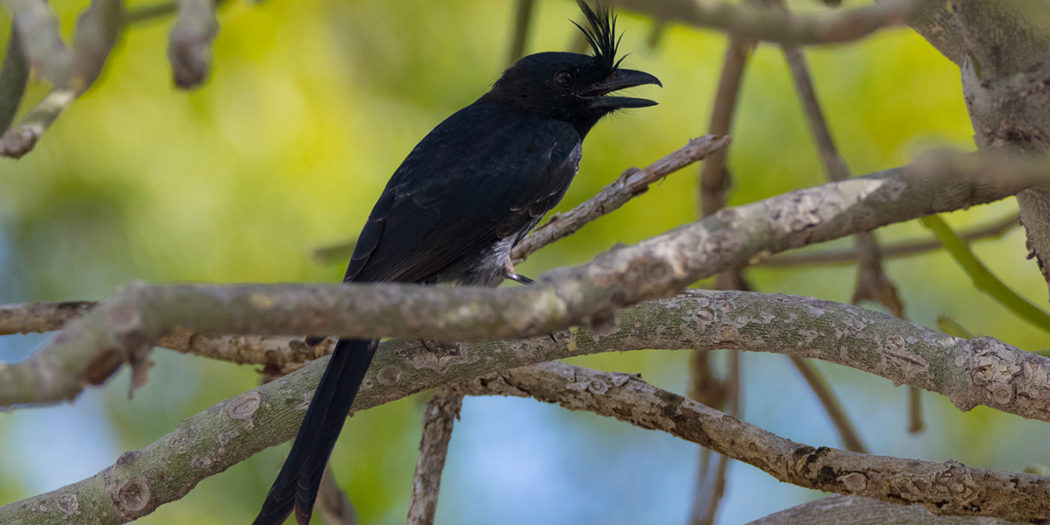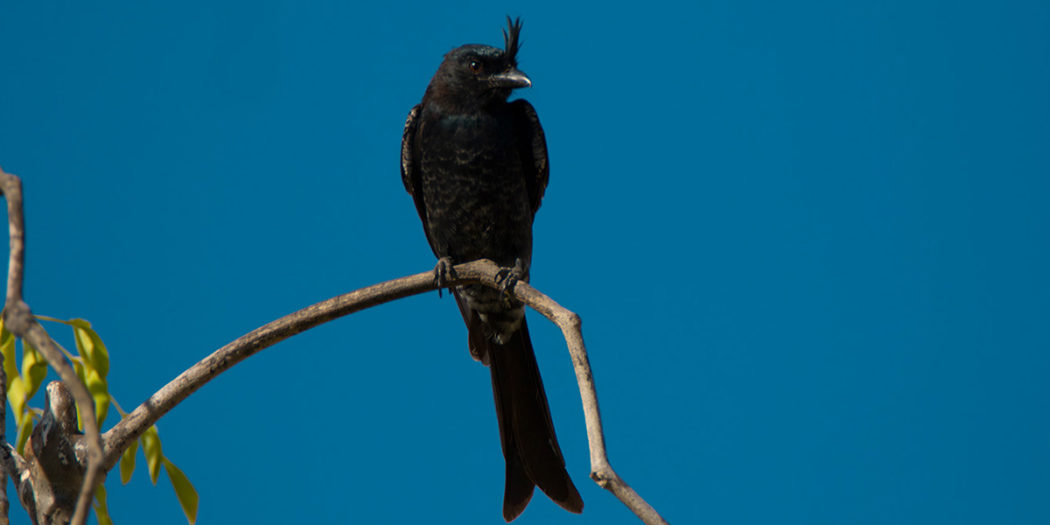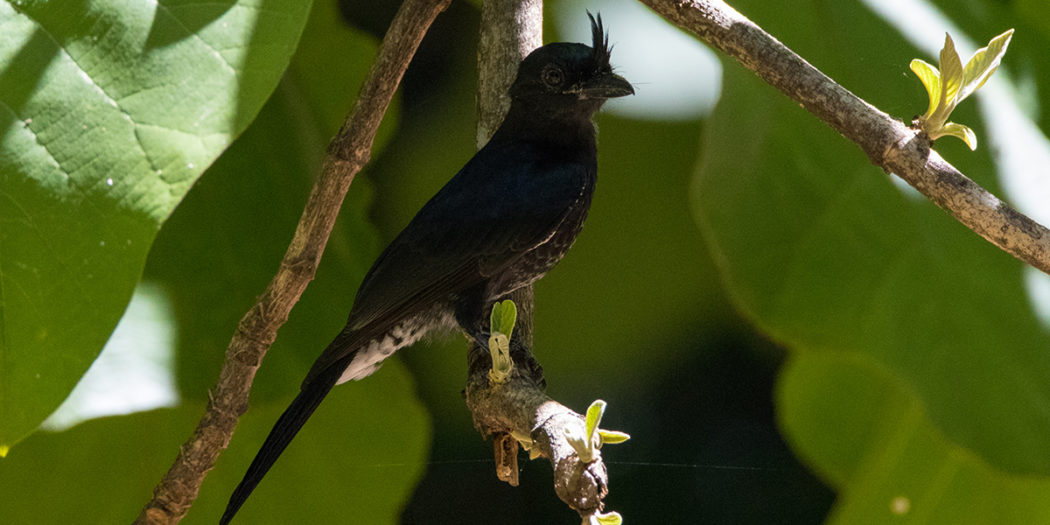Drongos populate the entire continent of Africa. Their habitat on the island of Madagascar is just as variable as the African continent. From dry forest to rainforest, from intact primary jungle to man-made farmland, the Drongo can cope with almost any environment. But the Drongo species on Madagascar is a special one: Here live the Madagascan, endemic subspecies of the Crested Drongo (Dicrurus forficatus).
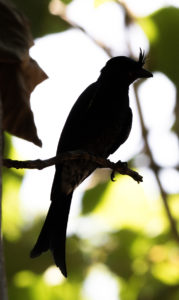
Crested Drongos are known above all as skillful tricksters. They regularly pursue other birds, including Madagascar coucal and France’s Sparrowhawk, and even small mammals such as Fanaloka and Ring-tailed Mongoose. If the pursued animal has successfully made a prey, the Crested Drongo sings loud warning calls. It imitates exactly the warning call of the species it is chasing, pretending birds of prey or Fossas to be around. Startled, the bird or mongoose flees from the supposed attacker – and usually drops the food it has just captured. Quickly the Crested Drongo takes the dropped food. Through this trickery, the Crested Drongo preys on a good part of its food. It eats mainly insects and arachnids but does not spurn small lizards, frogs or a few fruits when the opportunity arises.
In general, the Crested Drongo is not a shy bird. In Madagascar, you can observe again and again how the blackbirds annoy and scare up their predators or other animals in general. Ring-tailed lemurs, but also snakes and Madagascar Iguanas are pestered and annoyed until they leave their place or avoid the potential prey.
Crested Drongos do not form their own flocks. They usually mingle with other birds, preferably paradise flycatchers, Magpie Robins, and Hoopoes. These, in turn, are not exclusively victims of the feathered tricksters. They also enjoy the protection offered by Crested Drongos through their imitation talent. Because the fake calls are also a good distraction for birds of prey and may mislead other attackers.
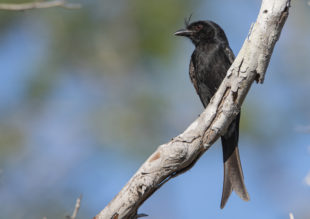
The end of the dry season around September and October heralds the breeding season for the Crested Drongo. Once a pair has found each other, the female lays two to four small eggs in a small nest. The nest lies high up in the trees, mostly in branch forks. Crested Drongos are very caring parents. During breeding and young rearing, the nest is vehemently defended. After all, if the offspring survive the first year, they can later live to be up to ten years old and provide for dozens of other generations of Crested Drongos.
Due to their great skill and their high adaptability, there are still Crested Drongo everywhere in Madagascar. They are not yet threatened and will probably continue to live and sing on the island for centuries to come. Talking about singing, they are not only loud and like to trick, but they also sing a lot. You usually hear them as the first birds in the morning and as the last ones still singing before sunset.
 MADAMAGAZINE Your Magazine about Madagascar
MADAMAGAZINE Your Magazine about Madagascar

